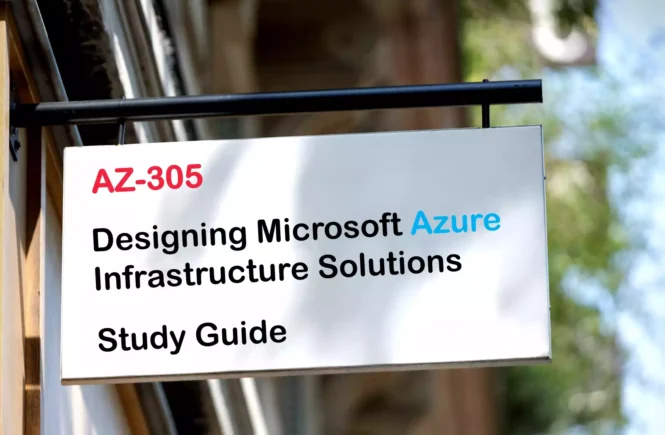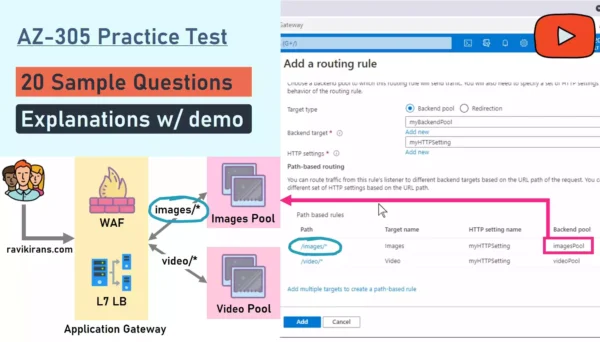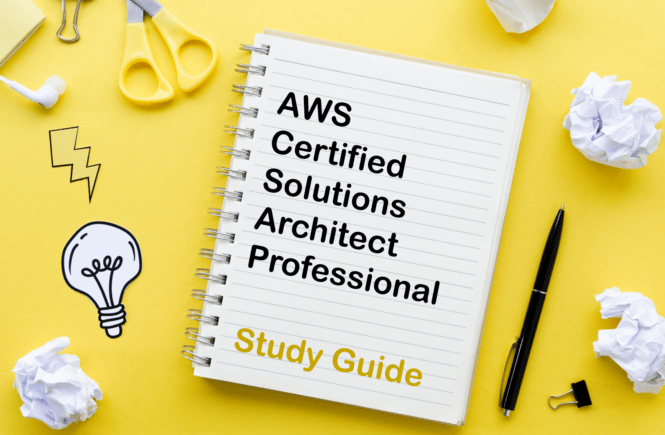How to Prepare for the AZ-305 Exam?
Preparing for the AZ-305 (Designing Microsoft Azure Infrastructure Solutions) exam? Don’t know where to start? This post is the AZ-305 Study Guide, which helps you to achieve the Microsoft Azure Certified Solutions Architect expert certification.
Note: This exam is in beta and replaces both the AZ-303 and AZ-304 exams.
This post contains a curated list of articles from Microsoft documentation for each objective of the AZ-305 exam. Please share the post within your circles so it helps them to prepare for the exam.
Exam Voucher for AZ-305 with 1 Retake
Get 40% OFF with the combo
AZ-305 Microsoft Azure Architect Online Course
| Pluralsight | Microsoft Azure Architect Technologies |
| Skylines Academy | NEW Course: Azure Architect Technologies |
| Udemy | Exam Preparation for Microsoft Architect Role |
AZ-305 Microsoft Azure Architect Practice Test
| Whizlabs Exam Questions | Azure Architect: 3 Practice Tests (110 Q & A) |
| Udemy Practice Tests | Microsoft Azure Architect Practice Tests |
AZ-305 Azure Architect Other Training Materials
| Amazon e-book (PDF) | Exam Ref Azure Architect Technologies |
AZ-305 Sample Practice Exam Questions
Looking for AZ-305 Dumps? Read This!
Using az-305 exam dumps can get you permanently banned from taking any future Microsoft certificate exam. Read the FAQ page for more information. However, I strongly suggest you validate your understanding with practice questions.
Check out all the other Azure certificate study guides
Full Disclosure: Some of the links in this post are affiliate links. I receive a commission when you purchase through them.
Design Identity, Governance, and Monitoring Solutions (25-30%)
Design a Solution for Logging and Monitoring
Design a log routing solution
Enhanced capabilities for routing logs and metrics
Route platform logs using diagnostic settings with Azure Monitor
Recommend an appropriate level of logging
Control the log level for Azure diagnostic logs
Control the logging levels in Azure Functions
Recommend a monitoring tool(s) for a solution
Design Authentication and Authorization Solutions
Recommend a solution for securing resources with role-based access controls
Secure your resources with Azure RBAC
How to secure your resources with Azure RBAC?
Recommend an identity management solution
Azure security features that help with identity management
Azure Identity & Access Management solutions
Identity management best practices
Recommend a solution for securing identities
Planning Microsoft Azure Identity
Secure access to your apps by using Azure identity services
Amazon link (affiliate)
Design Governance
Recommend an organizational and hierarchical structure for Azure resources
Organize your Azure resources effectively
Organize your resources with management groups
Manage & organize multiple Azure subscriptions
Recommend a solution for enforcing and auditing compliance
Build policies to enforce compliance
Improve your regulatory compliance
Design Identities and Access for Applications
Recommend solutions to allow applications to access Azure resources
Create an Azure AD app that accesses resources
Manage access to apps in Azure AD
Recommend a solution that securely stores passwords and secrets
Set and retrieve a secret from Key Vault
Store credentials in Azure Key Vault
Azure Key Vault: A secure place to store passwords
Recommend a solution for integrating applications into Azure AD
Integrate Azure Active Directory with apps
5 steps for integrating all your apps with Azure AD
SaaS app integration with Azure AD
Recommend a user consent solution for applications
Configure how end-users consent to apps
Azure AD app consent experiences
Manage consent to applications
Design Data Storage Solutions (25-30%)
Design a Data Storage Solution for Relational Data
Recommend database service tier sizing
Service tiers in the DTU-based purchase model
Azure Database – Choose the right service tier
Recommend a solution for database scalability
Dynamically scale database resources with minimal downtime
Azure SQL Database scalability
Get a high-performance scale for your Azure database with Hyperscale
Scale single database resources
Recommend a solution for encrypting data at rest, data in transmission, and data in use
Security control: Encrypt data in transit
Design Data Integration
Recommend a solution for data integration
Azure Data Factory (ADF) data integration
Data Integration with Azure Data Factory
Recommend a solution for data analysis Recommend a Data Storage Solution
Recommend a solution for storing relational data
Understand relational database management systems
Work with relational data in Azure
Describe how to work with relational data on Azure
Recommend a solution for storing semi-structured data
XML format in Azure Data Factory & Synapse
Index semi-structured data in JSON blobs
Recommend a solution for storing non-relational data
Manage non-relational data stores in Azure
Explore non-relational data in Azure
Design a Data Storage Solution for Non-relational Data
Recommend access control solutions to data storage
Access control lists in Azure Data Lake Storage Gen2
Access control model for Data Lake Storage
Authorize data operations in Azure Storage
Recommend a data storage solution to balance features, performance, and cost
Block blob storage performance tiers
Performance & scalability checklist for Blob storage
Azure Premium Storage: Design for high performance
Plan and manage costs for Azure Blob Storage
Design a data solution for protection and durability
Securing data solutions: Data protection
Data security and encryption best practices
Overview of the reliability pillar
Design Business Continuity Solutions (10-15%)
Design a Solution for Backup and Disaster Recovery
Recommend a recovery solution for Azure, hybrid, and on-premises workloads that meet recovery objectives (RTO, RLO, RPO)
Disaster recovery solution for Azure IaaS applications
Azure Disaster Recovery: Azure-to-Azure and Physical-to-Azure
Reduce disaster recovery time with Azure Site Recovery
Understand the recovery solutions for containers
Get-Az Recovery Services Backup Container
Recommend a backup and recovery solution for Compute
Backup & restore with Azure Backup Instant Restore capability
Enable backup when you create an Azure VM
Back up an Azure VM from the VM settings
Recommend a backup and recovery solution for databases
Back up multiple SQL Server VMs from the vault
Back up SQL Server always-on availability groups
Back up and restore your Azure SQL database
Recommend a backup and recovery solution for unstructured data
Overview of operational backup for Azure Blobs
How to backup Azure Blob storage accounts?
Backup & replication for Apache HBase
Design for High Availability
Identify the availability requirements of Azure resources
Availability options for Azure Virtual Machines
Azure services that support availability zones
Recommend a high availability solution for Compute
Highly available multi-region web app
Availability options for Azure Virtual Machines
Recommend a high availability solution for non-relational data storage
High availability in Azure Cosmos DB
Recommend a high availability solution for relational data storage
High availability for Azure SQL Database & Managed Instance
High availability in Azure Database for MySQL
Design Infrastructure Solutions (25-30%)
Design a Compute Solution
Recommend a Virtual Machine-based compute solution
Microsoft Azure App Service, Cloud Services, or VMs?
Azure VMs or Azure App Service. Which one to choose?
Choosing an Azure compute service
Recommend an appropriately sized compute solution based on workload requirements
Virtual machine sizing guidelines
How to choose an Azure Virtual Machine?
Recommend a Container-based compute solution
Choose compute platforms for container-based apps
Recommend a Serverless-based compute solution
Choose the best Azure serverless technology for your business
Serverless compute options in Azure
Design a Application Architecture
Recommend a caching solution for applications
Caching guidance: Best practices for cloud apps
What is Azure Cache for Redis?
Recommend a messaging architecture
Asynchronous messaging options
Design an Azure messaging architecture
Recommend an event-driven architecture
Event-driven architecture style
Architecture patterns for event-driven applications
Why you should consider an event-driven architecture?
Recommend an automated deployment solution for your applications
Automating Node.js deployments with Azure Pipelines
Automate deployments from Azure Repos with Octopus Deploy
VSTS: Automated deployment to Azure Web App
An introduction to Azure Automation
Recommend an application configuration management solution
Simplify configuration management with Azure App Configuration
Configure Azure services with Configuration Manager
Recommend a solution for API integration
Architect API integration in Azure
Basic enterprise integration on Azure
An overview of Azure integration services
Design Migrations
Evaluate migration solution that leverages the Cloud Adoption Framework
Microsoft Cloud Adoption Framework for Azure
Cloud migration in Cloud Adoption Framework
Assess workload and refine plans
Assess and interpret on-premises servers, data, and applications for migration
Assess physical servers for migration to Azure
Azure VM assessments in Azure Migrate
Assess and migrate web apps to Azure
Azure Migrate: Discover, Assess, migrate demo
Recommend a solution for migrating applications and Virtual Machines
Migrate an on-premises web application to Azure App Service
Application migration examples for Azure
Migrating Hyper-V VMs to Azure
Migrate on-premises machines to Azure
Recommend a solution for migrating databases
What is Azure Database Migration Service?
Migrate SQL Server databases to Azure
Recommend a solution for migrating unstructured data
Azure Storage migration tools comparison for unstructured data
Migration of unstructured data
Design Network Solutions
Recommend a network architecture solution based on workload requirements
Architect network infrastructure in Azure
Azure networking architecture documentation
Recommend a connectivity solution that connects Azure resources to the Internet
Provide internet access for Azure Virtual Machines
Recommend a connectivity solution that connects Azure resources to on-premises networks
Connect an on-premises network to Azure VNet
Connecting an on-premises network to Azure
Extend an on-premises network using VPN
Optimize network performance for applications
Optimize VM network throughput
Azure virtual machine network throughput
Recommend a solution to optimize network security
Recommend a load balancing and routing solution
A guide to help you choose the correct load balancing solution
Picking the right Azure Load balancing solution
Azure virtual network traffic routing
This brings us to the end of the AZ-305 Designing Microsoft Azure Infrastructure solutions study guide
What do you think? Let me know in the comments section if I have missed out on anything. Also, I love to hear from you about how your preparation is going on!
In case you are preparing for other Azure certification exams, check out the Azure study guide for those exams.
Follow Me to Receive Updates on AZ-305 Exam
Want to be notified as soon as I post? Subscribe to the RSS feed / leave your email address in the subscribe section. Share the article to your social networks with the below links so it can benefit others.






